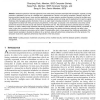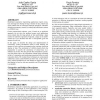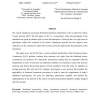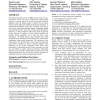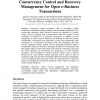TODS
2010
14 years 5 months ago
2010
: © A survey of B-tree locking techniques Goetz Graefe HP Laboratories HPL-2010-9 storage systems, databases, B-tree, indexes, concurrency control, locking B-trees have been ubiqu...
PVLDB
2010
14 years 5 months ago
2010
Replication is a widely used method for achieving high availability in database systems. Due to the nondeterminism inherent in traditional concurrency control schemes, however, sp...
TKDE
2002
14 years 6 months ago
2002
Database systems for real-time applications must satisfy timing constraints associated with transactions. Typically, a timing constraint is expressed in the form of a deadline and ...
TKDE
2002
14 years 6 months ago
2002
As technological advances are made in software and hardware, the feasibility of accessing information "any time, anywhere" is becoming a reality. Furthermore, the diversi...
TKDE
1998
14 years 7 months ago
1998
—There is an ever-increasing demand for more complex transactions and higher throughputs in transaction processing systems leading to higher degrees of transaction concurrency an...
SAC
2002
ACM
14 years 7 months ago
2002
ACM
Distributed cooperative engineering applications require consistent and long-term sharing of large volumes of data, which may cause conflicts due to concurrent read/write operatio...
JSS
1998
14 years 7 months ago
1998
Most of the proposed concurrency control protocols for real-time database systems (RTDBS) are based on serializability theorem. Owing to the unique characteristics of real-time da...
DPD
2002
14 years 7 months ago
2002
The current standard in governing distributed transaction termination is the so-called Two-Phase Commit protocol (2PC). The first phase of 2PC is a voting phase, where the partici...
CIDR
2009
14 years 8 months ago
2009
The traditional architecture for a DBMS engine has the recovery, concurrency control and access method code tightly bound together in a storage engine for records. We propose a di...
WOTUG
2007
14 years 8 months ago
2007
Concurrency control mechanisms such as turn-taking, locking, serialization, transactional locking mechanism, and operational transformation try to provide data consistency when con...


